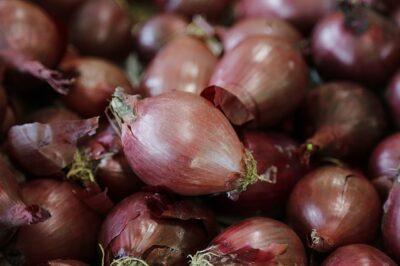We all know that fresh vegetables are an important part of a healthy diet, but did you know that not all vegetables are created equal? In fact, some veggies are better for you than others.
The U.S. Department of Agriculture (USDA) recommends that moderately active adults up to age 50 consume about 2 1/2 cups of vegetables per day, while adults over 50 should reduce this daily intake by a half cup.
 As a general rule, the healthiest vegetables (and fruits) are those that have a high-density value, which is the amount of nutrients a food has in relation to the number of calories it has.
As a general rule, the healthiest vegetables (and fruits) are those that have a high-density value, which is the amount of nutrients a food has in relation to the number of calories it has.
Seamazing: The Low-Cost Way To Re-mineralize Your Soil
So, yes, there is a list of “least nutritious” vegetables.
Here, then, are the seven least nutritious vegetables you can grow in your garden this year, according to the USDA’s National Nutrient Database.
7. Celery
You would have to eat an awful lot of celery to get a nutritional boost. An eight-inch stalk, for example, offers only 1.6 percent of the daily requirement for calcium and 2 percent of the requirement for vitamin C. Low in calories and high in fiber, store-bought celery is prominent on the Environmental Working Group’s “Dirty Dozen” list of vegetables and fruit with pesticide residue. Even if you grow it yourself in your own organic garden, however, celery serves as little more than as an edible scooper for dips and spreads.
6. Cucumber
One cup of refreshing sliced cucumber offers only 16 calories; however, its nutritional value is slim as well. Even if you grow your own organic cucumbers – thereby avoiding the synthetic wax added to supermarket cukes — you will gain less than 5 percent of the USDA daily requirement for potassium, manganese, magnesium and vitamin C by eating this vegetable.
5. Eggplant
Although it is a good source of fiber, raw eggplant can contain high levels of solanine, a form of glycoalkaloid poison found in members of the nightshade vegetable family. Solanine can pose a particular problem for people with joint problems or chronic inflammation.
Eggplant also contains oxalates, a substance that may contribute to kidney or gallbladder problems, including the formation of kidney stones, in certain individuals.
4. Radishes
Although radishes do contain vitamin C, you would have to eat very large amounts of them to get it. But the consumption of large amounts of radishes can irritate the digestive tract. Eating these root vegetables, which are classified as a goitrogenic food, also can aggravate a thyroid condition.
3. Spaghetti squash
Often touted as a low-carb, low-calorie replacement for pasta, spaghetti squash gets its name because its flesh separates into spaghetti-like strands after cooking. Although it does contain a fair amount of fiber, spaghetti squash offers little in terms of nutritional value.
2. White (button) mushrooms
Mushrooms of all types have tough cell walls that make them practically indigestible if you do not cook them.
Order Your Spring Seed Catalog Right Here!
Common button mushrooms offer little nutritional benefit, although, yes, they can be quite tasty!
1. Onion
Onions are part of the allium family, a genus of bulbous plants (including garlic, shallots, leeks and chives) that produce chemical compounds that have distinctive taste and smell and that often irritate the human body. (If you cry when you slice onions, this is the reason.)
Many people experience gassiness and bloating after eating raw onions.
Final Thought
Keep in mind that each of these vegetables also contains beneficial nutrients. In most cases, there is no need to eliminate them from your diet, but this year you may want to plant more nutritious veggies in your garden.
Related:
The 7 Healthiest Vegetables You Can Plant In The Garden This Year
What vegetables would you add to our list? Share your ideas in the section below:
Every Spring, Gardeners Make This Avoidable Mistake — But You Don’t Have To. Read More Here.
 Off The Grid News Better Ideas For Off The Grid Living
Off The Grid News Better Ideas For Off The Grid Living






